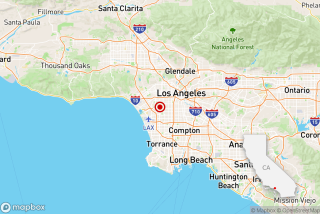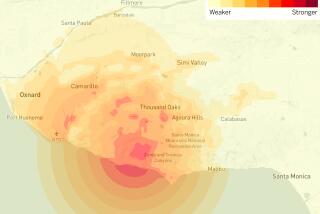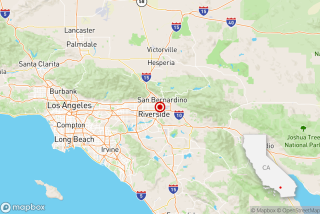Magnitude 2.1 earthquake hits Inglewood
A weak earthquake, registering as magnitude 2.1, hit underneath Inglewood early Monday morning.
The earthquake struck at 1:13 a.m., with an epicenter close to the intersection of La Brea and Centinela avenues.
Residents responding to the U.S. Geological Survey’s “Did You Feel It?” survey said they felt weak or light shaking, generally of a type that produces no damage.
The Newport-Inglewood fault is the area surrounding the epicenter of the earthquake. The Newport-Inglewood fault has long been considered one of Southern California’s top seismic danger zones because it runs under some of the region’s most densely populated areas, from the Westside of Los Angeles to the Orange County coast.
Oil put L.A. on the map. It may have exaggerated the city’s quake risk too »
A study published in 2017 uncovered evidence that major earthquakes on the fault centuries ago were so violent that they caused a section of Seal Beach near the Orange County coast to fall 1½ to 3 feet in a matter of seconds.
Those earthquakes, roughly dated in 50 BC, AD 200 and the year 1450 — give or take a century or two — were all more powerful than the magnitude 6.4 earthquake of 1933, which did not cause a sudden drop in the land.
The observations suggested that earthquakes as large as magnitudes 6.8 to 7.5 have struck the Newport-Inglewood/Rose Canyon fault system, which stretches from the border of Beverly Hills and Los Angeles through Long Beach and the Orange County coast to downtown San Diego.
Earthquake on the beach: Scientists think a 7.4 temblor could reach from L.A. to San Diego »
The 1933 earthquake brought down buildings from Santa Ana to Compton, with Long Beach hit particularly hard. About 120 deaths were recorded; many brick buildings came tumbling down, and state officials later outlawed the construction of those types of buildings.
Some older brick buildings built before the 1930s still exist across California, and experts say they remain a deadly hazard. While some cities, like L.A., have ordered them demolished or strengthened; others, such as those in Riverside and San Bernardino counties, have allowed them to remain standing without requiring owners to retrofit them.
More to Read
Start your day right
Sign up for Essential California for news, features and recommendations from the L.A. Times and beyond in your inbox six days a week.
You may occasionally receive promotional content from the Los Angeles Times.







